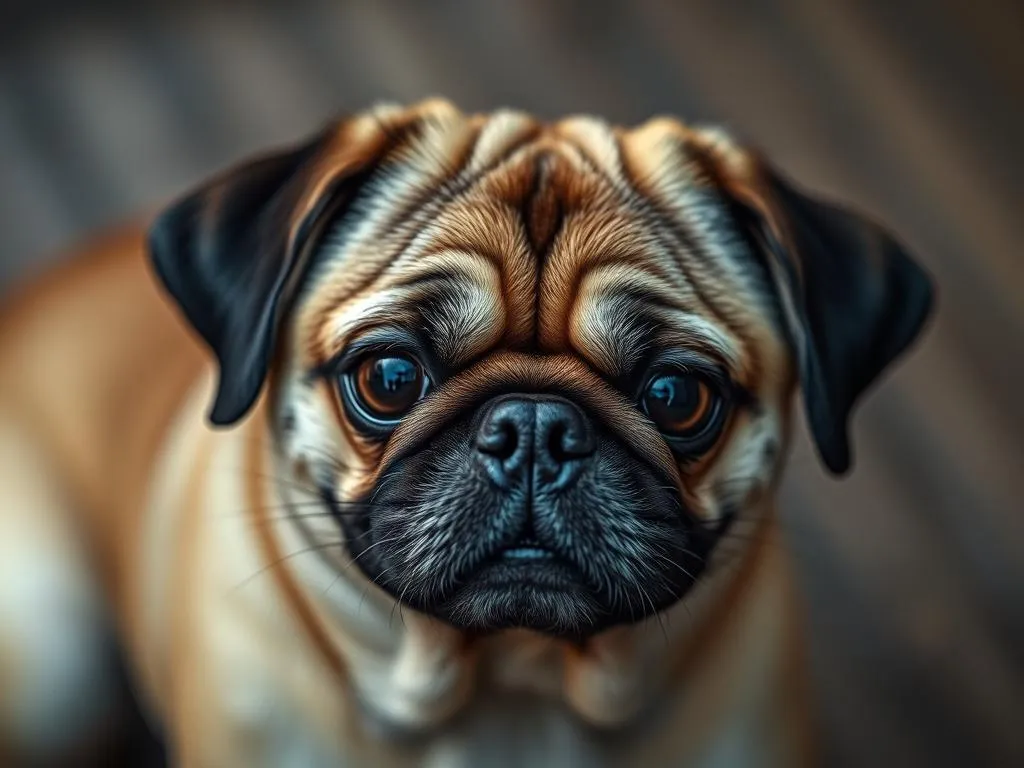
Introduction
Dog breeds come in all shapes, sizes, and temperaments, each with its own unique characteristics and quirks. Understanding different dog breeds is vital for potential pet owners, as it helps them choose a companion that best fits their lifestyle and preferences. Among the diverse world of dogs lies the Pugapoo, a charming mixed breed that combines the traits of the Pug and the Poodle. This article aims to provide a comprehensive guide on Pugapoos, covering their characteristics, care, and suitability as pets.
Understanding Mixed Breeds
Mixed breeds differ significantly from purebreds, which are dogs bred from specific lineage with set standards. Pugapoos, as a mixed breed, inherit traits from both parent breeds, resulting in a unique combination of characteristics.
Benefits of Owning a Mixed Breed Dog
Owning a mixed breed dog, like the Pugapoo, offers several benefits:
- Genetic Diversity and Health Advantages: Mixed breeds often enjoy greater genetic diversity, potentially leading to fewer inherited health issues compared to purebreds.
- Unique Traits and Characteristics: Each Pugapoo is unique, inheriting different traits from its parent breeds, which can result in a one-of-a-kind personality and appearance.
Parent Breeds: Pug and Poodle
To fully appreciate the Pugapoo, it’s essential to understand its parent breeds:
- Pug: Known for their playful nature, affectionate demeanor, and distinctive wrinkled face, Pugs are small, sturdy dogs that thrive on human interaction.
- Poodle: Highly intelligent and easily trainable, Poodles come in three sizes (standard, miniature, and toy) and have a hypoallergenic coat that requires regular grooming.
The combination of these two breeds results in a delightful canine companion that embodies the best traits of both.
Characteristics of the Pugapoo
Physical Appearance
Pugapoos generally range in size from small to medium, depending on whether the parent is a standard or miniature Poodle. Here are some characteristics to expect:
- Size and Weight: A typical Pugapoo weighs between 10 to 20 pounds and stands about 10 to 15 inches tall.
- Coat Type and Colors: Their coat can vary widely, often being curly or wavy, thanks to the Poodle genes. Common colors include black, fawn, white, and a mix of these shades.
- Distinctive Features: Most Pugapoos inherit the Pug’s adorable facial structure, complete with a short snout and expressive eyes. Their ears may be floppy like a Pug’s or curly like a Poodle’s.
Temperament and Behavior
The Pugapoo is known for its friendly and affectionate temperament. Here’s what to expect:
- General Personality Traits: These dogs are typically playful, loving, and eager to please, making them excellent companions.
- Socialization Tendencies: They enjoy being around people and are generally good with children and other pets if properly socialized from a young age.
- Compatibility: Their friendly nature makes them suitable for families, singles, and seniors alike.
Energy Level and Activity Needs
Pugapoos have moderate energy levels and require regular exercise to stay healthy and happy:
- Exercise Requirements: A daily walk and some playtime will suffice to meet their exercise needs.
- Playfulness: They love interactive play and can adapt well to different living situations, including apartments, as long as they receive adequate mental and physical stimulation.
Health Considerations
Like all breeds, Pugapoos are prone to specific health issues, influenced by their parent breeds. Awareness of these can help owners maintain their dog’s health:
Common Health Issues
- Brachycephalic Issues: Due to their Pug heritage, Pugapoos may inherit breathing problems related to their short snouts.
- Eye Issues: Both Pugs and Poodles can suffer from eye conditions, including cataracts and progressive retinal atrophy.
- Skin Problems: Allergies and skin infections can occur, especially if they inherit the Poodle’s sensitive skin.
Importance of Regular Vet Check-Ups
Regular veterinary visits are crucial for early detection and management of potential health issues. Owners should schedule annual check-ups and stay updated on vaccinations.
Preventative Care Measures
To ensure a healthy life for your Pugapoo, consider the following preventative measures:
- Regular vaccinations
- Routine dental care
- Consistent parasite prevention
Lifespan Expectations
With proper care, Pugapoos can live between 12 to 15 years, a lifespan that reflects the health and genetics of both parent breeds.
Training and Socialization
Training a Pugapoo can be both rewarding and challenging due to their intelligent yet sometimes stubborn nature.
Training Challenges
- Stubbornness: They may inherit a bit of stubbornness from their Pug parent, making consistent training essential.
- Distraction: Their playful nature can lead to distractions during training sessions.
Recommended Training Techniques
- Positive Reinforcement: Use treats and praise to encourage desired behaviors.
- Consistency: Maintain a consistent training schedule to help your Pugapoo understand commands and expectations.
Importance of Socialization
Early socialization is vital for preventing behavioral issues. Expose your Pugapoo to various environments, people, and other animals to develop a well-rounded personality.
Tips for Effective Training
- Keep training sessions short and fun.
- Use a variety of training methods to maintain engagement.
- Be patient and celebrate small victories.
Grooming and Maintenance
Grooming needs for Pugapoos can vary based on their coat type, but some general guidelines apply:
Grooming Needs
- Coat Care: Regular brushing is essential to prevent matting and reduce shedding. If your Pugapoo has a curlier coat, more frequent grooming may be needed.
- Bathing Tips: Bathe your dog every 4 to 6 weeks, but avoid over-bathing, as it can strip natural oils from their coat.
Nail Trimming and Ear Cleaning
- Nail Trimming: Trim nails every few weeks to prevent overgrowth and discomfort.
- Ear Cleaning: Regularly check and clean their ears to prevent infections, especially if they have floppy ears.
Seasonal Considerations
- Shedding: Be prepared for seasonal shedding, particularly during spring and fall.
- Allergies: Watch for signs of allergies, which can manifest as itching or skin irritations.
Nutrition and Diet
Feeding your Pugapoo a high-quality diet is crucial for their overall health and well-being.
Recommended Diet
A balanced diet should consist of high-quality dog food that meets their nutritional needs. Look for options with real meat as the first ingredient and avoid fillers.
Importance of High-Quality Dog Food
Investing in quality dog food can help prevent health issues and promote a shiny coat and healthy skin.
Portion Control and Feeding Schedule
- Portion Control: Follow the feeding guidelines on the dog food label, adjusting based on your dog’s activity level.
- Feeding Schedule: Feed your Pugapoo two meals a day to maintain energy levels and prevent overeating.
Common Dietary Restrictions or Allergies
Some Pugapoos may inherit food sensitivities from their Poodle parent. Monitor for signs of allergies and consult with a vet if you notice any adverse reactions.
Living Environment and Lifestyle
Understanding the ideal living environment for your Pugapoo is essential for a happy and fulfilling life.
Ideal Living Situations
Pugapoos adapt well to various living situations:
- Apartments vs. Houses: They thrive in both settings, provided they receive enough exercise and mental stimulation.
- Adaptability to Different Climates: While they can live in various climates, be cautious in extreme temperatures, as they may struggle with heat due to their brachycephalic nature.
Tips for Creating a Pet-Friendly Environment
- Ensure your home is safe by removing hazards and securing areas where the dog may get into trouble.
- Create a cozy space with a comfortable bed and toys for mental stimulation.
Considerations for Active Owners vs. Less Active Families
If you’re active, your Pugapoo will enjoy joining you on walks and outings. Conversely, if you have a less active lifestyle, ensure you engage them in play and mental activities to keep them stimulated.
Adoption and Purchase Options
When considering welcoming a Pugapoo into your home, there are several options for finding one.
Where to Find a Pugapoo
- Breeders: Look for reputable breeders who prioritize health and temperament in their breeding practices.
- Shelters and Rescues: Many mixed breeds, including Pugapoos, end up in shelters. Adopting from a rescue can be a rewarding experience.
What to Look for in a Reputable Breeder
- Health testing for common breed-specific issues.
- Transparency about the puppy’s lineage and health history.
- A commitment to socializing and caring for the puppies until they find homes.
Questions to Ask Before Adopting
- What health tests have been done on the parents?
- Can you provide references from previous puppy buyers?
- What kind of socialization and training have the puppies received?
Adoption Process and Considerations
Be prepared for an application process if adopting from a rescue. They will typically conduct interviews to ensure a good fit for both the dog and your family.
Conclusion
The Pugapoo is a delightful mixed breed that brings together the best traits of its parent breeds, the Pug and the Poodle. With their friendly temperament, moderate exercise needs, and adaptability, they can make excellent companions for a variety of lifestyles. Understanding their characteristics, health considerations, and care requirements is vital for providing a loving and nurturing environment. If you’re considering adding a Pugapoo to your family, take the time to research and understand the joys and responsibilities that come with dog ownership. This charming breed could be the perfect addition to your home.









